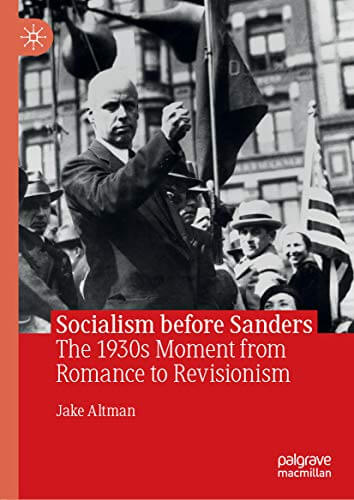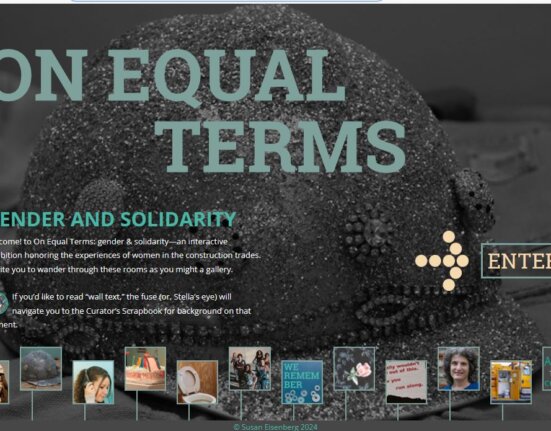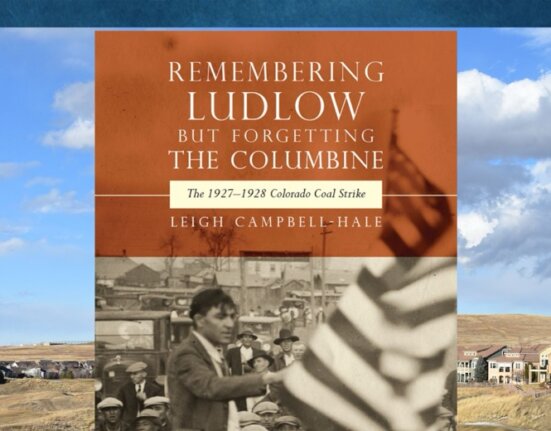Our series of interviews with authors of new books in labor and working-class history continues. In this edition, Stephanie Riley interviewed Jake Altman on his new book Socialism before Sanders: The 1930s Moment from Romance to Revisionism
- You talk about the redefinition of socialism during the 1930s. How was socialism redefined and how does the help clarify our understanding of what socialism meant during the 1930s?
In the 1930s and 1940s socialists largely abandoned ideas about the perfectibility of human beings and lost their faith in the inevitabile and complete social change that they had previously expected and worked toward. It was also a period during which socialists made real inroads into government, the labor movement, and popular consciousness. If it wasn’t the Debsian socialism of a few decades earlier, it was something akin to the yearnings and desires of many who had supported the Socialist Party and gone into to the New Deal coalition: old age pensions, progressive taxation, relief programs, massive public works, public funding for culture, state-directed agricultural policy and economic support, rural electrification, and the National Industrial Recovery Act and then the National Labor Relations Act and the Fair Labor Standards Act. What astounds me still is that it required decades of overlapping movements and pressures to arrive at a reform of capitalism, most notably the New Deal and substantive achievements in the labor movement during this period.
It is sometimes difficult to imagine the transformational power of the New Deal. Many socialists were very skeptical of the New Deal at first. Despite their misgivings, it was hard for socialists to discount real improvements in people’s material conditions and the power that a union backed by the force of the law could wield. These real benefits convinced many that social democracy was on the march in the New Deal, and that more reforms would follow.
I see a strong parallel between the pragmatic optimism of the 1930s and the socialist revival we are experiencing in the United States today. Given the ideological dominance of market utopianism in the last several decades, the 2008 economic crisis, and continued public sector austerity, it’s less difficult for an ever larger number of people to imagine and articulate a transformational set of policies akin to the New Deal. It is no coincidence that Bernie Sanders, a pragmatic social democrat, is leading the trend to renew the promises, some unfilled, of the New Deal. This pragmatism, what some what call reformism, is what survives of the socialist tradition and it fits well with an urgent desire to counter the damage of market fundamentalism by helping people build economic stability and security in their lives and their communities.
- You discuss the role the Union Theological Seminary (UTS) in New York City and its professors had in shaping students’ attraction toward socialism. Can you speak more about how the UTS and Reinhold Niebuhr played a role in attracting young people towards socialism?
Niebuhr was generous with his time. He was very popular with his students, which is interesting because he had quite an apocalyptic worldview during the 1930s. His was not an uplifting message. At times he thought that a descent into barbarism was the most likely outcome of the crisis of period and went so far as to write, “Next to the futility of liberalism we may set down the inevitability of fascism as a practical certainty in every Western nation.” His socialist students embraced this view to an extent. They were action-oriented people, and Niebuhr’s pessimism drove them further to the left, to embrace revolutionary rhetoric. He pushed them to reckon with the crisis of capitalism, the threat of fascism, and the seeming inability of European socialists to stem its rise. Their initial answer was revolution. Over time, their experience trying to start said revolution and their work in the labor movement softened their views. Many of them remained socialists for the rest of their lives. The socialism of their later lives was not the same as when they had first been drawn to the socialist movement in the 1930s. It was tempered by experience and the complexity of problems that arise in human society.
- You examine the tensions between Socialists and labor union leaders. Can you describe how those tensions helped and/or hurt the revival of the SP?

There were often tensions within the broader socialist movement over trade union policies. In the beginning of the 1930s the relationship between the social-democratic unions and the Socialist Party was mutually beneficial. The labor movement benefited from having talented socialists to draw on during union organizing drives and socialists benefited from paid work in the labor movement. Tensions emerged later when socialists faced pressure to endorse Democrats over Socialist Party candidates. Beyond that though, activity in the labor movement tended to make people think about issues in a more pragmatic way. They had to represent the best interests of their members and the larger labor movement. The socialists that I studied took this duty very seriously. The problems of the day had to be solved. The union had to be kept afloat. Work had to be done and decisions had to be made in very difficult circumstances. They saw people at their best and their worst. It was hard to maintain a utopian outlook in the labor world of the 1930s and 1940s. Franz Daniel was shot by rival union organizers. The bullet hit his pocket book instead of his heart. It was incredibly stressful work, and I think people lost their patience for utopianism. Serious foreign policy tensions also developed within the Socialist Party and these tended to further alienate younger labor-oriented socialists from the Socialist Party. Most of the younger generation supported lend-lease to aid the British and US entry into WWII. Leaving the Socialist Party, however, did not mean leaving socialism behind. Many of these people continued to identify as socialists.
- You discuss the influence of women in helping to revive the SP during the 1930s. In what ways did women help revive the SP and how did they differ from previous women’s work in the SP?
A whole host of women took on organizing work for the SP across the United States in the 1930s. They were doing practical organizing work, building local chapters, getting out the vote, running for office, and organizing chapters on college campuses. An important work on socialist women is Mari Jo Buhle’s Women and American Socialism, 1970-1920. I tried to fill in where Buhle’s book stopped and found that women continued to play an important role in the SP in the 1930s. For instance, very little has been written about Frances Violet Thomas and the role she played to help Norman Thomas lead the Socialist Party. Mildred Jeffrey and Alice Cook were two college-educated women who were drawn into the socialist revival of the 1930s and as a result went on to prominent positions in labor movement. Elizabeth “Zilla” Hawes is less well known. The book highlights some of her achievements as well. In the 1930s, socialist women argued, sometimes publically and other times privately, that their contributions were as positive and productive as their male colleagues’. They cast themselves as builders and challenged the idea that women were inferior.
- Now that you’re done with your book, what are you looking forward to reading next?
I finished Joseph McCartin’s Collision Course a few weeks ago. McCartin’s vivid account of the work of air traffic control gave me stressful dreams for a week. It’s a great book. With the number of job actions in the public sector on the rise in the United States, Collision Course should be required reading for every labor leader. I’m encouraging folks in my labor community to read it.
I have a stack of big books on my desk for what might become a new project on the broader history of American social democracy in the twentieth century and its relationship to social-democratic thought in Europe. I’m re-reading some classics, including Sally Miller’s Victor Berger and the Promise of Constructive Socialism, 1910-1920; Steve Fraser’s Labor Will Rule: Sidney Hillman and the Rise of American Labor; Nelson Licthenstein’s Walter Reuther: The Most Dangerous Man in Detroit; Geoff Eley’s Forging Democracy; and Tony Judt’s Postwar: A History of Europe Since 1945.






